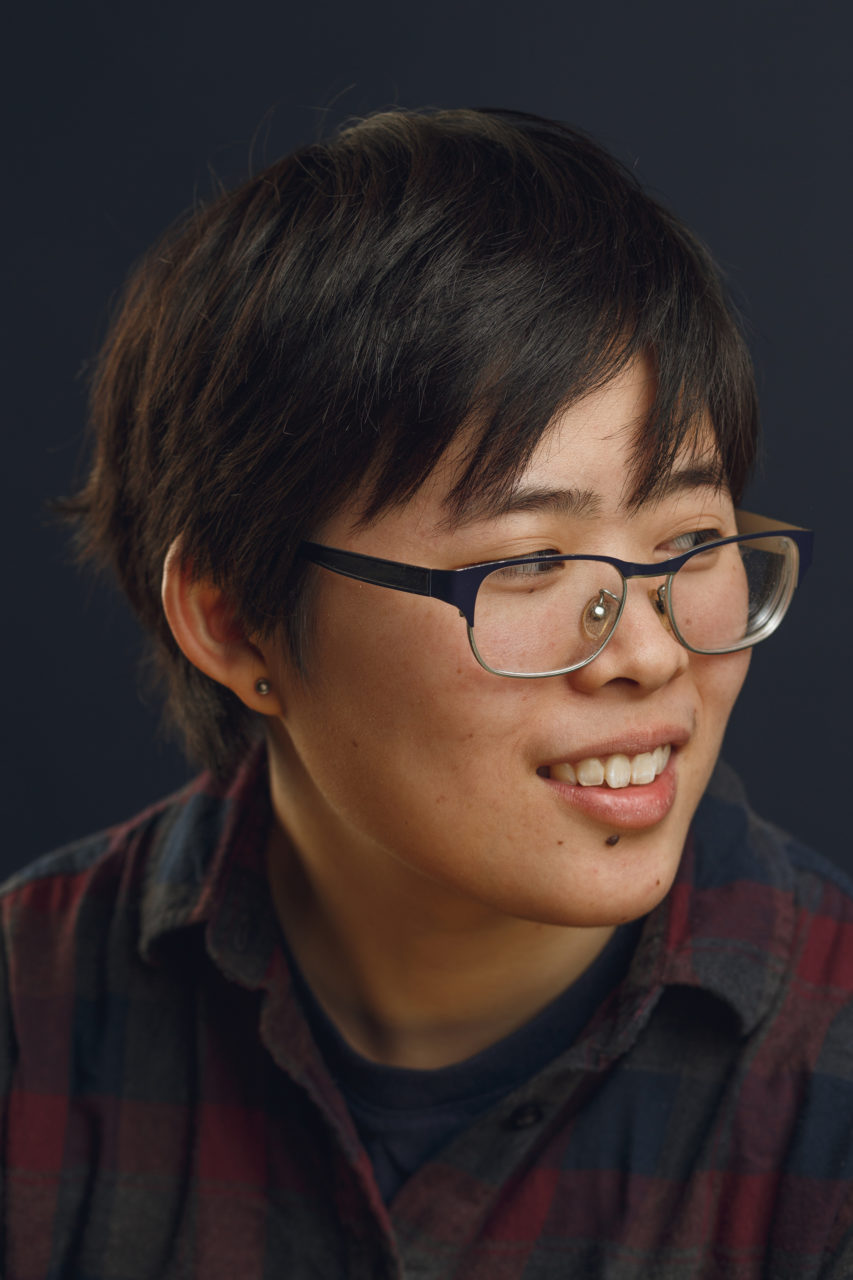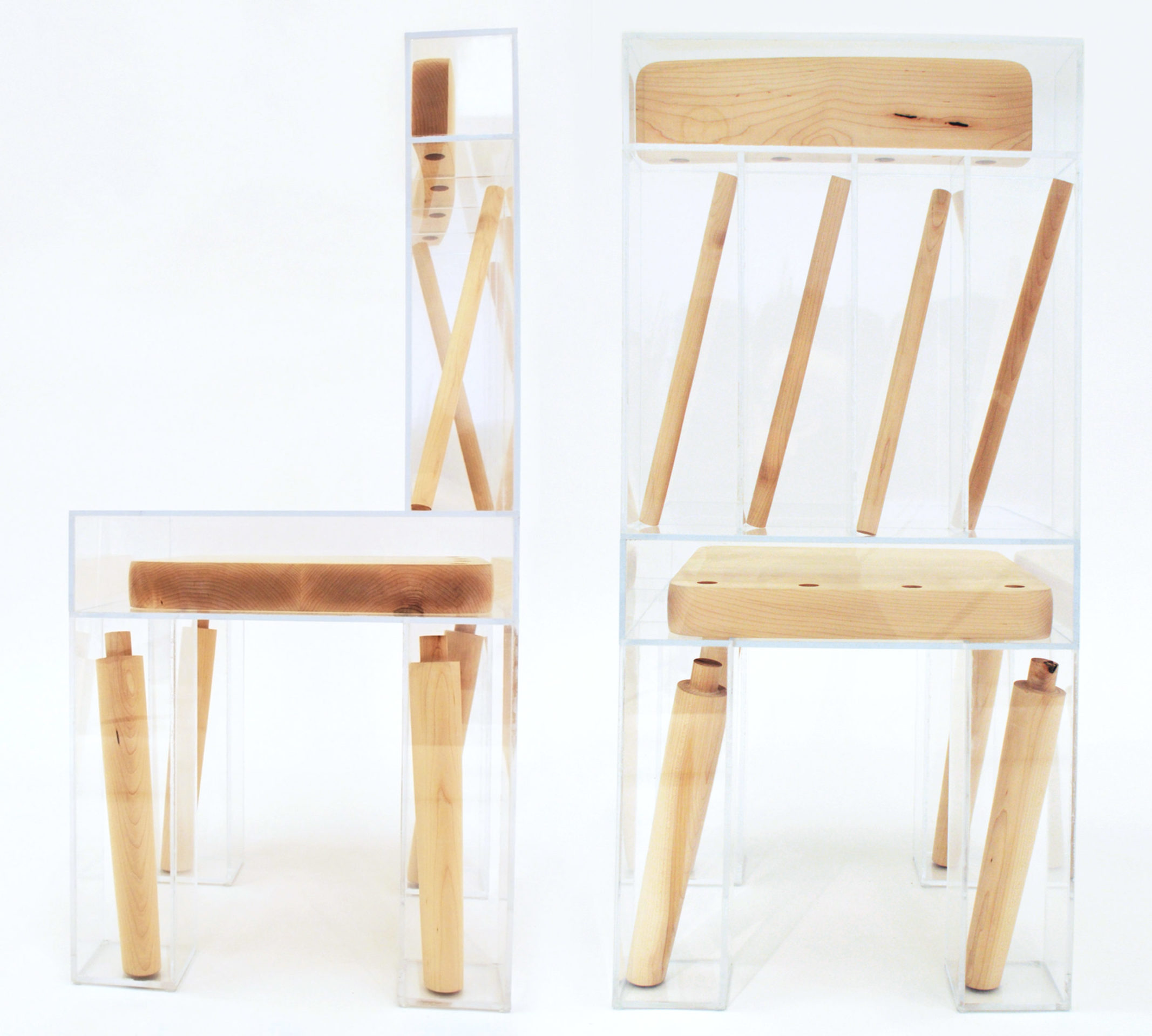Natural science and furniture making might seem like completely opposed fields of study and practice, but for emerging designer Joyce Lin the two are intrinsically linked. As a recent graduate of the Brown–Rhode Island School of Design (RISD) Dual Degree Program, the Houston-based wunderkind combines the best of both worlds in works of art that challenge common perceptions.
AN Interior: How did you decide to study both science and design? And how does this hybrid education continue to inform your work?
Joyce Lin: I knew going into college that I wanted to study a science as well as heavy sculpture. When looking at the strongest programs at both schools, I came across the highly interdisciplinary furniture design program at RISD. I was drawn to the idea of learning how to work with materials and find ways to transform them into all-encompassing and exacting results. Even if my goal was not to make functional furniture, I liked the aspect of problem-solving involved. Even now I equate this aspect of the practice to putting a thread through a needle or landing a plane.
After trying out different classes at Brown, I came across an equally interdisciplinary geology course, which covered all sciences. What stuck out to me most was the concept of narrative: telling the earth’s story, how things got to be the way they are today, how they’re still interconnecting, and how we can still see the past in our environment. This understanding informs how I create and transform objects. I’m interested in emphasizing how something is made but also exploring the paradox of permanence and impermanence, as well as the opaqueness and transparency that mark our modern materials, processes, and attitudes. These are forces found in nature but that we have also manipulated as humans, resulting in anthropogenic materials like plastic, foam, and resin. As a maker, I naturally take on the role of a human being in this capacity by flattening live plants and deconstructing furniture, and sealing both of these natural and manmade elements behind sterile, meticulously crafted plastic to represent a limbo state of connection and disconnection, chaos and order.


AN: How is narrative expressed in your exploration of material properties as seen in early works like the Fluffy Furniture collection and later pieces like Skinned Chair?
JL: Early on, I thought a lot about materials and their role in our lives and what forms we associate them with. With Fluffy Furniture, I wanted to exaggerate the relationship we have with everyday things. With this collection purely composed of stuffed fabric and color, the materials become the object itself. Moving on to Skinned Chair, I started thinking about how new man-made material properties influence how we design. What I found most fascinating was the tension between the first material I worked with, wood, and easier materials like epoxy clay plastics. With this work, I was trying to delve deeper into my understanding of material and also the relationship between skin and structure. Though [Skinned Chair]’s original furniture piece is made out of wood, I wanted the inseams to be made of something synthetic that isn’t supposed to be that way but plays a visual trick that makes the wood veneer look artificial.
AN: Talk more about the role of function in your practice, both in terms of it being a point of inquiry and an essential element in your works.
JL: When working with furniture, you’re inherently concerned with function, but for me, this interest goes back to when I was making kinetic sculpture in high school. Even then, it was important for me that those objects could be activated by some form of user engagement. Function breaks down the disconnect viewers might have between viewing an object on a wall and their own experience. It’s almost like looking at a TV screen; there’s that world and there’s this world. The feeling of being able to break that boundary has always been fascinating to me. I’m intrigued by the play that occurs between reality and fantasy but also the pursuit of truth, which is why I’m so preoccupied with uncovering structures. I find learning more about a thing makes it more beautiful, but at the same time, we’re kind of living in a world where we keep pushing the boundaries of what our imagination can be, and reality is crumbling around us in different ways.
Header image: With projects like Exploded Chair, Lin uncovers what makes things work. Parts of a wooden spindle chair are encased in acrylic to emphasize the components’ forms. (Courtesy Joyce Lin)
